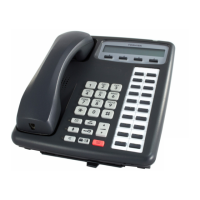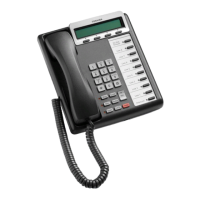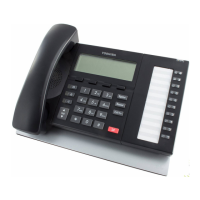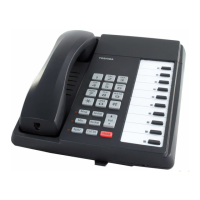Site Requirements
DK40 Installation
Strata DK40 I&M Manual Spring 1999
2-3
Refer to the Strata DK40 Programming Manual or DK Library CD-Rom for more details.
The location must not be:
◆ Subject to extreme heat or cold
◆ Subject to corrosive fumes, dust, or other airborne contaminants
◆ Subject to excessive vibration
◆ Next to television, radio, office automation, or high frequency equipment
If reserve power is to be installed for the Strata DK40, the batteries will require a well-
ventilated location close (within nine feet) to the DKSUB40 (the optional Toshiba-supplied
battery cable is nine feet in length).
Table 2-1 Summary of Electrical/Environmental Characteristics
DK40 Primary Power
Input AC (Power Supply Specification)
AC frequency
Power
AC input current
220~240VAC
50/60 Hz
DK40 - 75 watts maximum
1A maximum
Environmental Specifications
Operating temperature
Operating humidity
Storage temperature
0 ~40° C (32~104° F)
20~80% relative humidity without condensation
-20~70° C (-4~158° F)
Power Supply
DC voltage output specification
-24VDC (-25.94~-28.66VDC)
+5VDC (+4.5~+5.5VDC)
Battery Charger Characteristics
Charger: current limiting
Nominal float voltage: 2.275 volts/cell
Charge current: 0.2 amps maximum
Battery discharge cut-off voltage: 20.5 ±0.5VDC
KSTU3
Ring Voltage
Square wave output with high/low option jumper:
Low position 130 ±20VDC peak-to-peak (no-load)
High position, 190 ±25VDC peak-to-peak (no-load)
Ringing capability 2 REN maximum per circuit, high or low position

